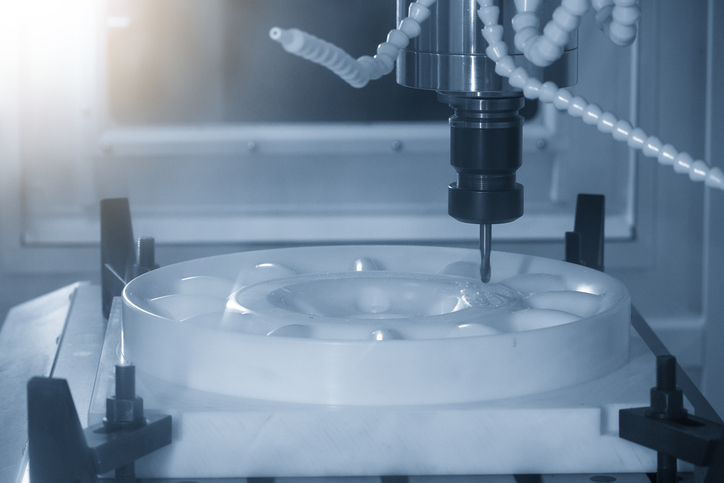Engineering and high-performance plastics have been game changers for many industries as they have become widely used to replace metals in demanding applications. These classes of plastics have appeal because of their many characteristics. While the properties vary by individual material and additives, manufacturers turn to them for their exceptional dimensional stability over a range of temperatures, as well as a high strength-to-weight ratio, high flexural strength, high tensile strength, decent chemical resistance, and excellent moldability and machinability.
While injection molding is a well-known manufacturing method for engineering and high-performance plastics, in many cases, CNC machining is preferable because of its unique advantages.
Understanding CNC Machining
CNC stands for computer numerical control, and as the name states, the machines are run by computers. An engineer creates a CAD or CAM file that details the part’s dimension, the file is turned into a CNC program, and the CNC machine executes the program, creating the highly accurate part.
Unlike injection molding, which is an additive technology, CNC machining is a subtractive manufacturing technology that removes material from a workpiece to create a part. It is also used as a secondary process on injection molded parts to create a smoother finish or improve the tolerance.
When discussing CNC machines, no one machine can handle every possible manufacturing operation. The characteristics of each machine, how they are used, and the needs of the part will impact which machines are used. An experienced CNC engineer will make the distinction and choose the operations that will obtain the desired results the most efficiently and cost-effectively. There are many types of CNC machines, but two common categories include:
- CNC Lathe: Machining a piece on a lathe is often referred to as CNC turning. The lathe has a fixed cutting tool that moves into a rotating workpiece. The tool of a traditional lathe moves on the X and Z axes. More sophisticated turning centers can include up to 5 axes and integrate other capabilities, like drilling or having a subspindle to transfer parts for continuous workflow.
- CNC Mill: Another method of CNC machining is known as milling. A mill differs from a lathe because the cutting tool rotates around the workpiece. Milling centers have a tool changer and can operate horizontally or vertically.
Why CNC Machining?
The use of engineered and high-performance plastics continues to grow in popularity for applications that face demanding environments or require accuracy and precision. CNC machining offers many benefits over other manufacturing methods.
Tight Tolerance
The most common reason for CNC machining an engineered or high-performance plastic part is the tolerances that can be achieved, which are often tighter than can be achieved with injection molding and other processes. The tolerance that can be achieved will vary by material and the part’s geometry. Because of this, requiring a very tight tolerance where it isn’t necessary can add significant costs to the project.
Cost Effectiveness
Machined components do not require the expensive tooling (molds) that injection molding requires. For smaller to moderate runs, machining can be more cost-effective per part. For large runs, injection molding may be a better solution.
Prototyping Support
CNC machining can produce prototypes quickly and efficiently because there are no special molds to be built. Compared to 3D printing, CNC machining can create design characteristics and use materials that 3D printing can’t while achieving tighter tolerances. CNC machined prototypes perform true to design in testing.
Complex Geometry
Complex geometries can be difficult to injection mold or, as in the case of undercuts, create additional costs in tooling. Because of the versatility of CNC machining, product designers have more flexibility with part geometries.
Polymer Compatibility
CNC machining provides a greater polymer selection than injection molding. For example, ultra-high molecular weight polyethylene (UHMWPE), which is very resistant to wear and impact, is also highly viscous and has a low melting point, making it difficult to inject and cool in a mold without deformation or shrinkage. However, it can be machined.
Choose a Partner Experienced In CNC Machining Plastics
CNC machining engineering and high-performance plastics can be challenging because of their nature. This is why it is imperative that your CNC machining partner has material knowledge as well as process and machine knowledge. Ensinger Poly Tech has all three. Highly skilled in CNC machining with in-depth process and material knowledge, we can take on your toughest challenges to create parts that meet your specifications. You get engineering, manufacturing, and assembly all under one roof with a focus on quality, timeliness, and cost efficiency. Contact us so we can learn more about your next project.
